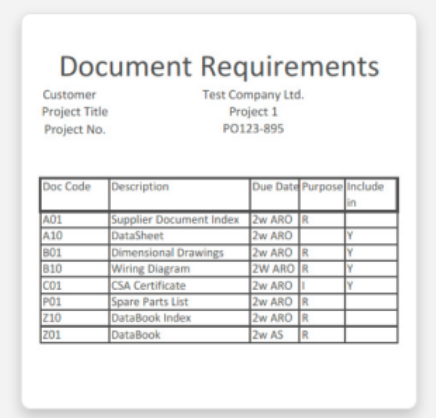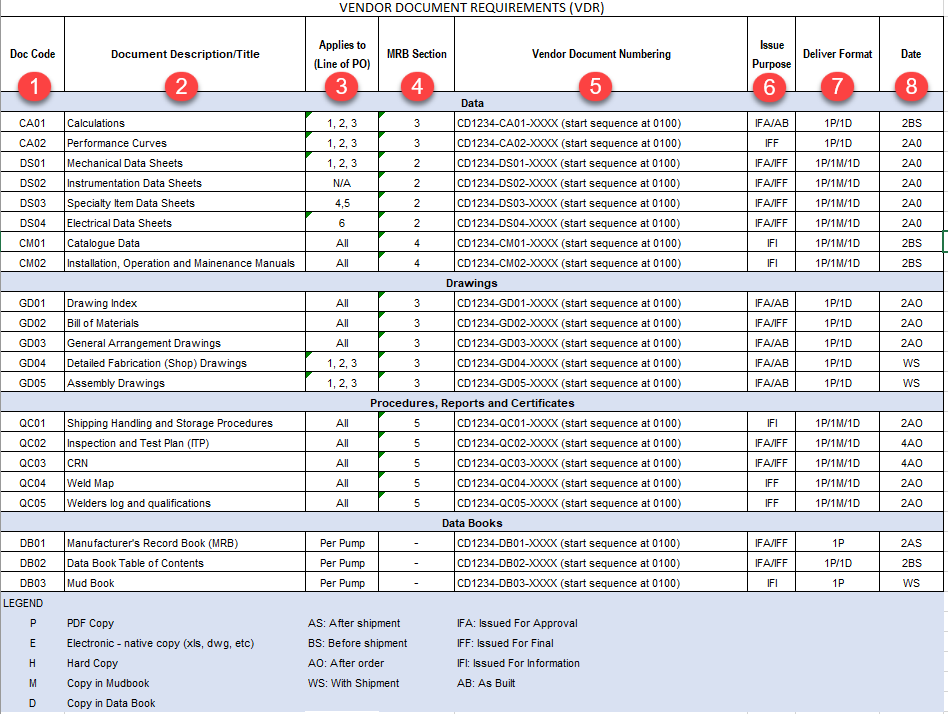
How to Enable Expediting for a Project With DocBoss
Enable Expediting From inside a project, navigate to the Project Menu > Setup > Expedite Settings [If you don’t see the Expedite…

The Vendor Document Requirements (VDR) is the very important information your customer will supply at the beginning of your project.
Let’s take a closer look at the VDR, the information it contains and the key components you’ll come across.
Purchasers often define the type of documents that vendors must supply as part of the supply contract. The Vendor Document Requirements (or VDR) is the list of those document types.
Each line typically includes a document code, description, and delivery timeline (e.g. 10 days after order), The VDR will also identify which codes should appear in document compilations like manufacturing record books, shipping dossiers and the like.
Note that while we use the term Vendor Document Requirements (VDR), this list goes by many names that your customers may also use:
Understanding the Vendor Document Requirements (VDR) and ensuring you gather all the information required to setup and execute your project is very important.
See below for the 8 top pieces of information that can be found on a VDR:
Below is a detailed example of a VDR along with the 8 pieces of information as described above to show you what it may look like.

If you’d like to learn more about the VDR and document control, download our free PDF survey Supplier vs EPC which goes into detail about document control and the VDR more specifically.
Also, don’t hesitate to contact us directly to learn more about how DocBoss can help you manage and deliver custom documentation to your customers at the end of projects and how DocBoss helps you manage your VDR throughout each project.
DocBoss is the only true document control system for
suppliers. Book a quick demo to see how we help process
equipment suppliers make more profit with less pain.